How to Grow Supersweet Snap Peas

It’s always a great day when I pick the first snap peas. A lot of the harvest never makes it to the kitchen. Snap peas—which snap like green beans and look and grow just like regular shelling peas—have one delicious difference: The pods are as tender and sweet as the peas inside. I could say I grow snap peas because they yield more food per square foot than shelling peas. But that’s not it. I truly enjoy the eat-it-all peas in the pod, whether I’m snacking on them in the garden, tossing them with pasta, or featuring them in a soup.
Although something like snap peas grew in the United States more than a hundred years ago, most gardeners didn’t know about them until Calvin Lamborn developed ‘Sugar Snap’ in the late 1970s. Lamborn, a pea breeder for Rogers Seed Company, crossed a sugar pea that had a thin, twisted, but edible pod with a shelling pea that had an undesirably thick pod. The result was a pea with a round pod and a crisp, tender, juicy texture. In 1979, ‘Sugar Snap’ was voted the All-America Selections winner for the best new vegetable, and it has been one of the most popular vegetables to grow ever since. Other varieties of snap peas have been introduced over the years, but ‘Sugar Snap’ is still my favorite. It has the sweetest flavor of all the snap peas, and it also supplies a long, abundant harvest, beginning about 10 weeks after sprouting.
Snap Pea Growing Basics
- Dig 1 inch of compost or manure into the beds.
- Plant early in spring, as soon as the soil is workable.
- Inoculate seeds with rhizobia bacteria.
- Sow the seeds 1 to 2 inches apart and ½ inch deep.
- Harvest when the pods are 3 inches long and plump.

When to plant snap peas
Seed packets tell us to plant peas in the spring as soon as the soil can be worked—when all the frost is gone from the garden beds and the soil isn’t too soggy. I would add these warnings: It’s essential to plant peas early, because the vines stop flowering when daytime temperatures stay above 80°F. On the other hand, if the soil is too cold and wet when you plant, the seeds can rot before they sprout. Pea seeds germinate best when the soil is between 50°F and 75°F.
I aim to plant in mid-April, about six weeks before the last-frost date in my area. I sow the seeds over a two- to three-week period for a nice long harvest. If April is cold, though, the first plants sulk, and all my plantings begin bearing about the same time. Snap peas aren’t that particular about soil. I add compost or rotted manure every year, shoveling about 1 inch on top of the soil and working it in.
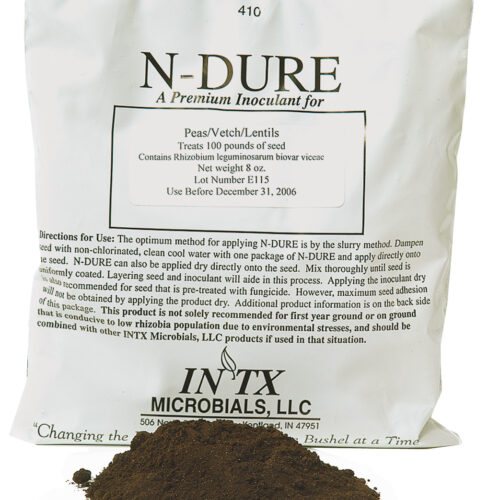
How to increase snap pea output
Special soil bacteria called rhizobia live in a symbiotic relationship with pea roots and help the plant extract nitrogen from the air. Although snap peas will grow without these bacteria, you can give them a boost and increase yields by inoculating them with rhizobia at planting time. You can usually buy the bacteria through the same catalog from which you order the peas. Dampen the seeds, roll them in the powder, and plant as usual. Some people say you need to inoculate only the first time you plant peas in a particular spot. Others say yields improve enough to justify using pea inoculant every year. I use it every year.
How to trellis snap peas
I grow my ‘Sugar Snap’ peas on a simple trellis system, which runs down the center of a raised bed. The heavy, pea-laden vines grow up to 7 feet tall, and they need a substantial support to keep them from blowing over. While it takes a little extra work to set up a trellis, as I get older I appreciate the comfort of not having to harvest every vegetable squatting, crouching, or bending over.
You don’t need a trellis to grow some varieties of snap peas. Good-tasting dwarf varieties, like ‘Sugar Ann’ or ‘Sugar Bon’,
require little or no help to hold themselves off the ground. Their vines grow 18 to 24 inches tall and bear 2½-inch-long pods about 60 days after planting. The pods are ready to harvest seven to 10 days earlier than ‘Sugar Snap’ peas.
Sow in bands, not in rows
I’ve found that peas help keep each other propped up if they are planted close together. For dwarf varieties (those that grow less than 3 feet tall), I scatter the seeds an inch or two apart in a 6-inch-wide band and cover them with half an inch of soil. As they grow, the plants’ tendrils wrap around each other, and the whole clump stays off the ground.
I plant tall peas, like ‘Sugar Snap’, in a 3-inch-wide band below the trellis. Once the peas’ tendrils catch the bottom of the netting, they will clamber to the top on their own.
Be aware of snap pea pests
I keep the soil around the pea vines evenly moist, but I don’t mulch because that encourages slugs, which are fond of defoliating the vines. My snap peas haven’t been bothered much by any other pests or diseases. The only problem I’ve had is aphids late in the picking season. They’re quickly dispatched with a spray of the hose or insecticidal soap.
When to harvest snap peas
By mid to late spring, the pods are about 3 inches long and ready to pick. Snap peas are at their best when the pods are well rounded and filled with plump peas but before they start to yellow or fade. Once the pods reach this stage, it’s best to pick them every other day because the more you pick, the more you’ll get throughout the season.

What to do when snap pea season ends
In summer, when the weather gets hot, the peas stop flowering and producing pods. I cut the vines at the base of the trellis and let them dry for a couple of days so that they’ll come off the netting more easily. There’s still plenty of growing time to plant salad or cooking greens, root crops, or quick-maturing bush beans in the same spot to follow the dearly departed peas.
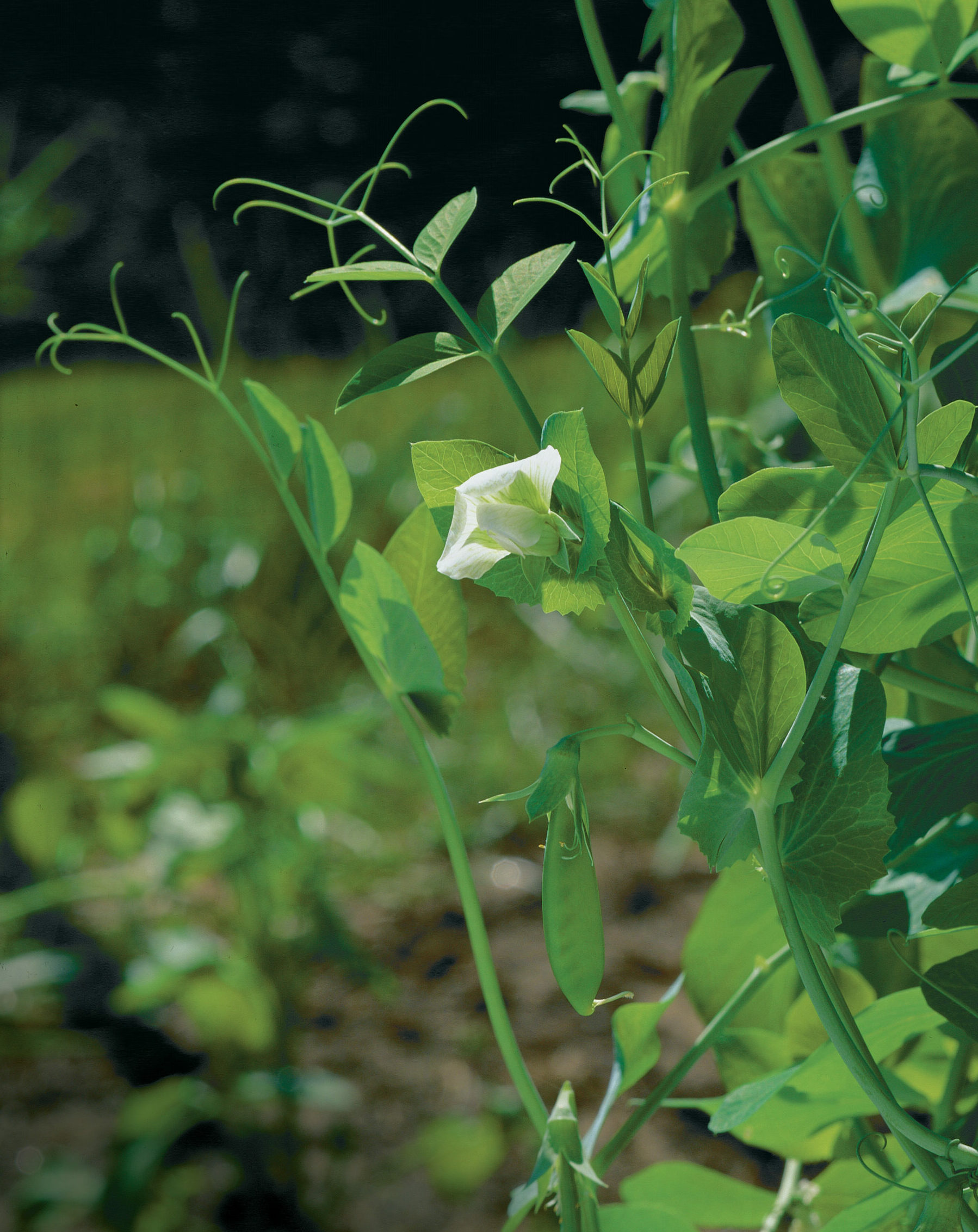
How to build a simple trellis
You can set up an inexpensive, 8-foot-long trellis in less than an hour. You’ll need two 7-foot-tall metal fence posts and an 8-foot length of nylon trellis netting.
- Pound the posts 2 feet into the ground, then string the netting between them, stretching it tight and tying at even intervals up and down the sides. Pea-laden vines are heavy, so make sure the netting is attached securely.
- Cut the vines at the base of the trellis at the end of the season, and let them dry out. Pull the dried vines off the netting, and bring the netting inside for winter.
- Reuse the same netting for up to 10 years. You can also use biodegradable netting instead of nylon so that you can cut the mesh and pea vines down together and compost the whole thing.
David Hirsch is the author of The Moosewood Restaurant Kitchen Garden. He lives and gardens near Ithaca, New York.
Fine Gardening Recommended Products
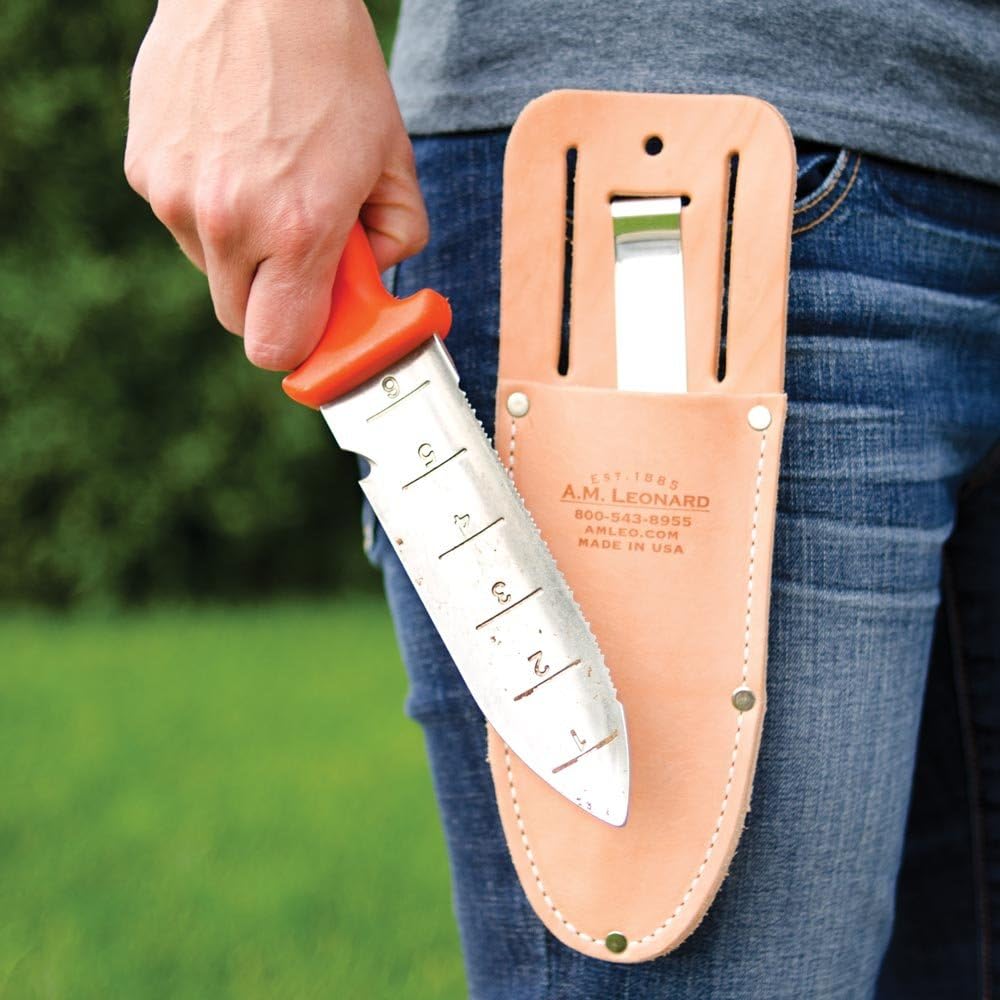
A.M. Leonard Deluxe Soil Knife & Leather Sheath Combo
Fine Gardening receives a commission for items purchased through links on this site, including Amazon Associates and other affiliate advertising programs.


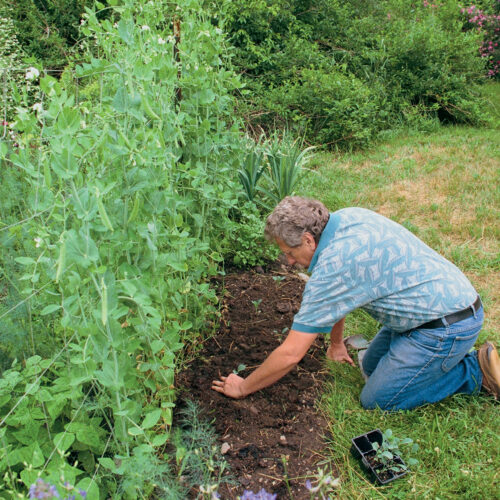
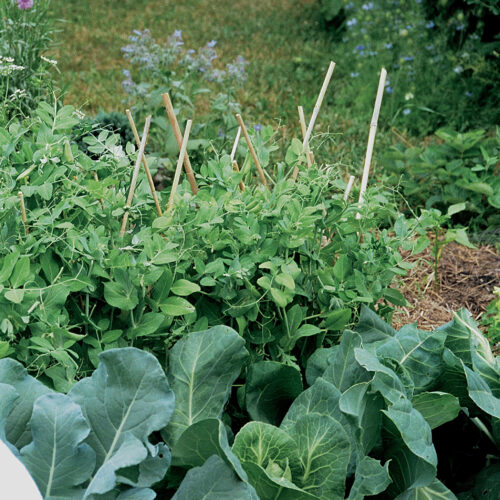
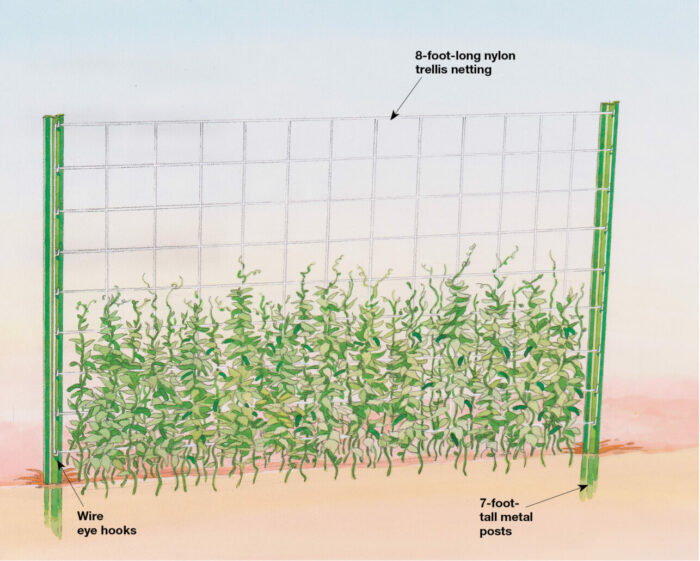




Comments
Log in or create an account to post a comment.
Sign up Log in